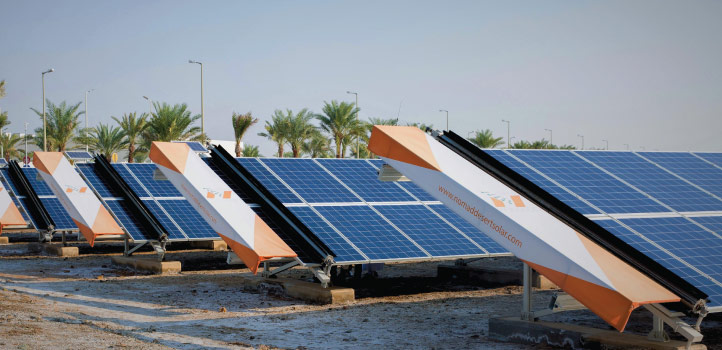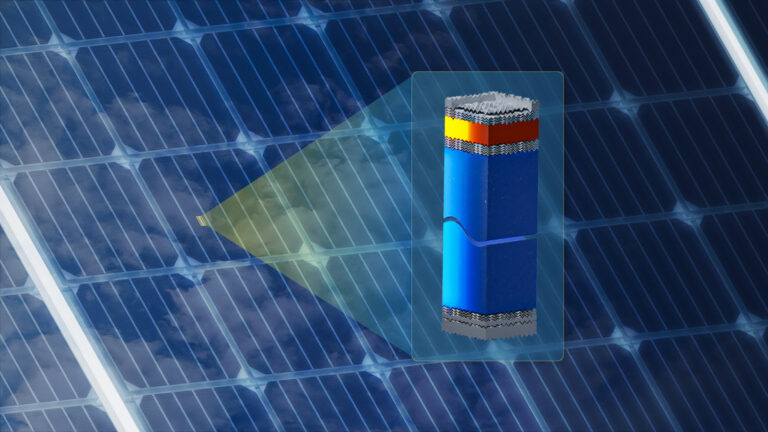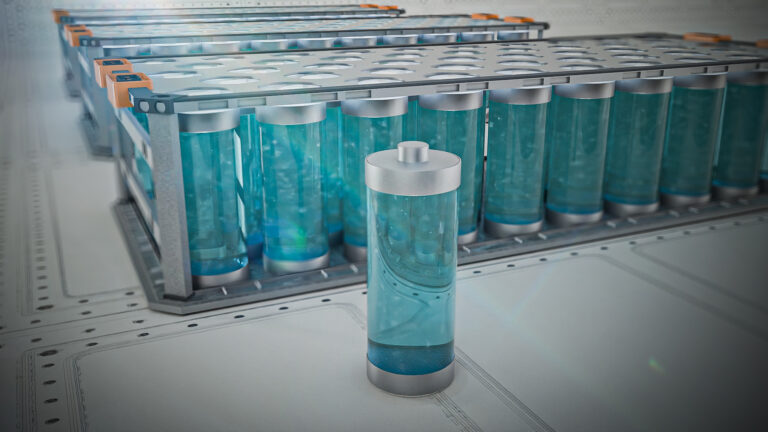Material Science and Engineering
Closing in on state-of-the-art semiconductor solar cells
Mixed-cation single crystals narrow the gap between perovskite and top-performing semiconductor solar cells.

A synthetic approach that improves absorber layers in perovskite solar cells could help them achieve their full potential and draw closer to the performance of leading gallium arsenide devices.
Solar cells that rely on perovskite thin films to capture sunlight are the fastest growing photovoltaic technology. Cheaper and easier to manufacture and incorporate into devices than conventional semiconductors, lead halide perovskites also effectively absorb visible light and display long charge carrier diffusion lengths — an indicator of their ability to maintain light-induced electrons and holes separation and facilitate charge transport.
Performance of solar cells hinges on absorber materials with a high-quality crystal structure and a narrow bandgap to maximize sunlight harvesting. This optimal bandgap range spans energies of 1.1 to 1.4 eV, which corresponds to near-infrared wavelengths.
Absorber layers containing polycrystalline lead halide perovskites have provided high-efficiency solar cells. Their performance, however, has been affected by considerable structural disorder and defects. Formamidinium lead triiodide features the smallest bandgap to date, but this bandgap exceeds the optimal range for single-junction devices. One way to reduce the bandgap of perovskites involves forming lead–tin alloys in the absorber, but this introduces crystal defects and instability.
Now, a team from KAUST has developed an approach using a microns-thick absorber layer consisting of perovskite single crystals to minimize the bandgap. The crystals contain a mixture of methylammonium and formamidinium organic cations.
The researchers incorporated the mixed-cation perovskite into unconventional inverted p–i–n solar cells, in which the absorber is sandwiched between an electron transport top layer and a hole transport bottom layer. The resulting solar cells exhibited an efficiency of 22.8 percent, surpassing the best-performing devices using single-crystal methylammonium lead triiodide.
“We had known that mixed-cation single-crystal absorbers could outperform single-cation absorbers due to their lower bandgap and superior optoelectronic qualities. However, this had not been realized before because of challenges in crystal growth and device integration,” says Abdullah Alsalloum, a Ph.D. student in Osman Bakr’s group.
The external quantum efficiency of the mixed-cation perovskite film, which measures its effectiveness when converting incoming light into charge carriers, shifted toward near-infrared wavelengths from that of polycrystalline formamidinium lead triiodide, consistent with its smaller bandgap. “By utilizing a thicker single-crystal absorber layer, we expanded the absorption range of the film so that it’s very close to the optimal range,” Alsalloum says.
The team is working on enhancing device performance and stability to get even closer to the top-performing gallium arsenide solar cells. “Future studies include optimizing device interfaces and exploring more favorable device structures,” Alsalloum adds.
References
-
Alsalloum, A.Y., Turedi, B., Almasabi, K., Zheng, X., Naphade, R., Stranks, S.D., Mohammed, O.F. & Bakr, O.M. 22.8%-Efficient single-crystal mixed-cation inverted perovskite solar cells with a near-optimal bandgap. Energy and Environmental Science 14, 2263-2268 (2021).| article
You might also like

Applied Physics
A single additive enables long-life, high-voltage sodium batteries

Bioengineering
Smart patch detects allergies before symptoms strike

Applied Physics
Two-dimensional altermagnets could power waste heat recovery

Applied Physics
Interface engineering unlocks efficient, stable solar cells

Applied Physics
The right salt supercharges battery lifespan

Applied Physics
Light-powered ‘smart vision’ memories take a leap forward

Applied Physics
Natural polymer boosts solar cells

Material Science and Engineering




